New Spaces, New Possibilities
The Ken Olsen Science Center at Gordon is one of many legacies of Ken Olsen, technology pioneer. The Olsen Center, which has opened up new possibilities for cutting-edge learning and research, is also ideally located near Gordon's 400+ acres of woodlands, and just a short drive from the Atlantic Ocean and from Massachusetts' famed Rte. 128 biotech corridor. Here are just a few stories about what is happening in the new classrooms and labs of KOSC—and beyond.
| Learn more about Ken Olsen | RSVP for Memorial Service |
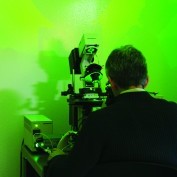
Micro Research Has Macro Impact
Among the new equipment in the Ken Olsen Science Center is an Olympus IX-81 inverted fluorescent microscope. The microscope is also equipped with a motorized stage and micromanipulator, which allows the retrieval of cells for preservation or expansion.
This state-of-the-art microscope is used to image fluorescently labeled cells as part of Dr. Craig Story’s microengraving research—the focus of his recent sabbatical at the Whitehead Institute for Biomedical Research in Cambridge. These findings could help researchers develop and test new vaccines for diseases including HIV, fungal infections and antibiotic-resistant bacterial infections. Back at Gordon, Dr. Story's students have the opportunity to participate in this important research. Read more...
The Power of Models
A $200 Lego model of an $80,000 atomic force microscope (AFM) was built in Gordon's Bowden Engineering Lab in the Ken Olsen Science Center. This Lego demonstration model functions in a manner similar to a real AFM, and gives students a conceptual and functional understanding of the powerful research instrument before actually learning how to use an AFM.
Gordon's 3-2 engineering program allows students to attend Gordon for the first three years before transferring to an engineering institution for the final two years. Upon completion of the full program, students receive a Bachelor of Science in Physics from Gordon College and a Bachelor of Science in Engineering from the engineering school.
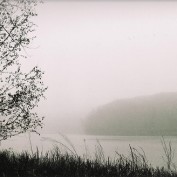
More than Just a Pretty Pond
We Are Not Alone: Critters in the Gordon Woods
Biology professor Greg Keller and his students have documented 23 mammals in the woods surrounding Gordon, including the red squirrel, gray squirrel, eastern chipmunk, eastern cottontail, American beaver, a variety of shrews, river otter, coyote, red fox, raccoon, mink, Virginia opossum, and white-tailed deer. The students will help Keller analyze the findings in the context of the region using a Geographic Information System (GIS). Keller hopes to publish their findings in academic journals, but mostly he believes the research is valuable because of the need to “minimize human impact so as to maintain the ecological integrity of the area.” Read more...
_2011_02_10_01_09_04.jpg)
On the Innovative Edge of Green Chemistry
On her third day of classes, Soo Yeon Kwon asked chemistry professor Irv Levy if there were any research projects she could take part in. Little did she know that she would be overseeing an extensive project in green chemistry that would involve presenting the results of her research at two green chemistry conferences, and having her work as been published in a journal for chemistry educators. Read more...
Also read more about Gordon's recent visibility in green chemistry, and about what Soo Yeon is doing now.
Physics Students Design "Merry Ornaments"
What could be more exciting than making your own ornament for an engineering class? Not just any ornament: a “geeky” one! Students from Dr. David Lee’s Introduction to Engineering participated in the “Geekiest Christmas Ornament” Contest where they could use their own creativity and make what they learned in class relevant to the making of the project. Their task was to build an ornament that met the following criteria:
- Fit inside a 6 x 6-inch box
- Weigh less than 1 kg.
- If using a power source or projectile, must not be dangerous
- Be actually hangable on a Christmas tree.
Twelve Pounds of Crisco, and Other Key Ingredients for Science Experience Day
Science Experience Day is a time for visiting students to meet current students as they work on science experiments together and meet Gordon's amazing professors. We asked a few of them how they prepare for their department open-house experiments. A few of their replies: Read more...

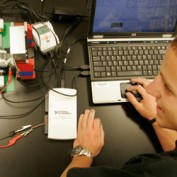
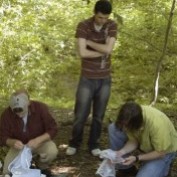
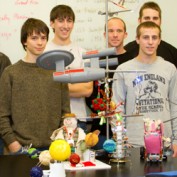
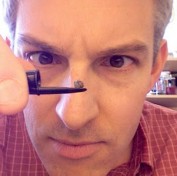
 Ken Olsen Science Center
Ken Olsen Science Center New Spaces, New Possibilities
New Spaces, New Possibilities


